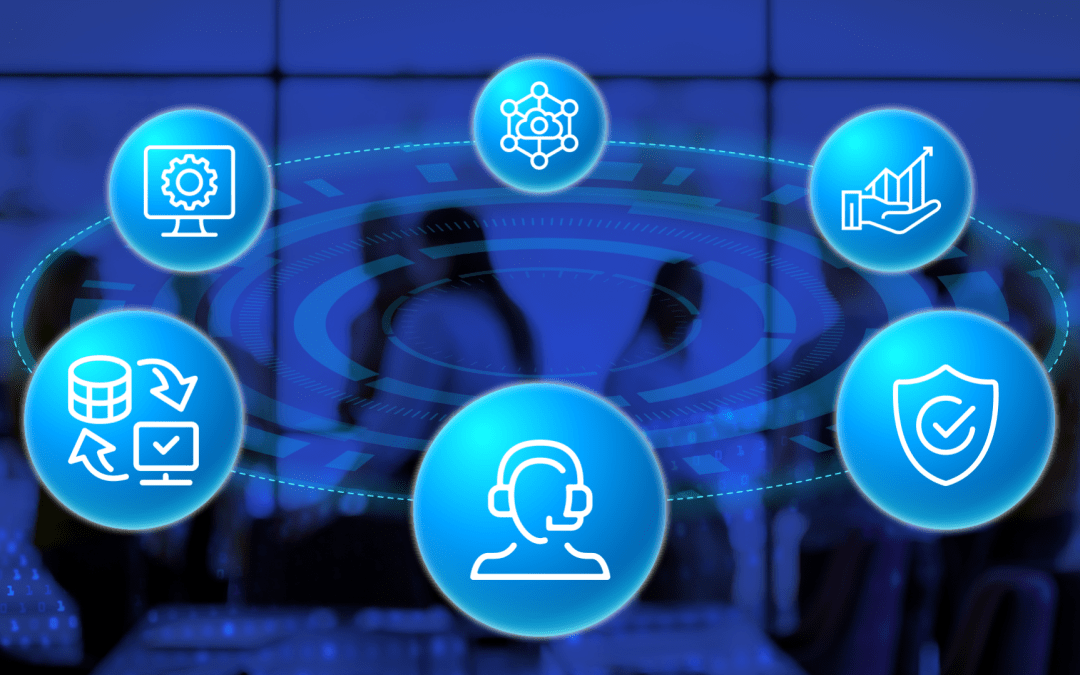Understand the Holiday Season Cyber Threats The holiday season is a time for joy, celebration, and generosity. However, this...


Understand the Holiday Season Cyber Threats The holiday season is a time for joy, celebration, and generosity. However, this...

Cybercriminals steal credit card? Cybercriminals have various methods at their disposal to hack and exploit credit card...

This in-depth cybersecurity planning guide provides information and advice to help organizations develop a successful strategy...

While home health agencies face distinct health IT challenges, collaboration and innovation are crucial for overcoming these...

Understanding Managed IT Services What Are Managed IT Services? Managed IT Services For business are the comprehensive...
In the ever-evolving landscape of technology, the role of Managed IT Service Providers (MSPs) has become paramount in shaping an organization’s IT strategy and success. As businesses increasingly rely on digital infrastructure, the choice of an MSP transcends the technical realm, becoming a pivotal business decision with far-reaching consequences.
The task of finding the right MSP, one that seamlessly integrates with your organization’s vision, goals, and values, can seem like navigating a complex maze. The path to this crucial alliance is illuminated by a series of prudent steps, each designed to align your aspirations with a partner that will orchestrate your IT journey.
In this guide, we unveil a comprehensive roadmap to empower you in this selection process. Through careful deliberation and a discerning approach, you can forge an alliance that not only optimizes your IT operations but also propels your organization toward a future of innovation and resilience.
Define your organization’s IT needs and goals. Determine which areas of IT management you want the MSP to handle, such as network monitoring, cybersecurity, data backup, cloud services, etc.
Conduct thorough research to identify potential MSPs. Seek recommendations from peers, colleagues, or industry associations. You can also search online and read reviews to gather insights into their reputation.
Look for MSPs with a proven track record and experience in managing IT for businesses similar to yours. Check if they have expertise in the specific technologies and industries relevant to your organization.

Review the range of services offered by each MSP. Ensure they can provide the specific services your organization needs. Consider their ability to handle both current and future IT requirements.
Inquire about their security practices. Ask how they protect against cyber threats, handle data breaches, and ensure compliance with industry regulations. A strong focus on cybersecurity is essential.
Choose an MSP that can accommodate your organization’s growth and changing IT needs. They should be able to scale their services as your business expands.
Check the provider’s response time for resolving IT issues. Make sure they offer 24/7 support, especially if your business operates beyond regular office hours.
Review their SLAs to understand the level of service you can expect. Clear SLAs ensure you have a mutual understanding of expectations in terms of response times, uptime, and support.
Communication is crucial. Ensure the MSP provides regular updates and reports on the status of your IT environment, performance metrics, and any issues that arise.
Request references from current or past clients. Contact these references to learn about their experiences with the MSP, the quality of services, and overall satisfaction.
Check if the MSP has strong partnerships with reputable technology vendors. These partnerships can indicate the MSP’s commitment to quality and access to the latest technologies.
The MSP’s values and approach should align with your organization’s culture. A good working relationship is essential for long-term collaboration.
If possible, visit the MSP’s facilities to understand their operations, team, and infrastructure firsthand. This can provide insights into their capabilities and work environment.
Inquire about their onboarding process. A well-structured onboarding process ensures a smooth transition and integration of their services with your existing IT setup.
While cost is important, it shouldn’t be the sole deciding factor. Focus on the value and quality of services you’ll receive. Compare pricing against the range of services offered.
Carefully review the contract terms, including contract duration, renewal terms, and termination clauses. Understand the exit process in case you decide to switch providers.
Ensure the MSP can provide customized solutions that meet your unique IT requirements. Avoid one-size-fits-all approaches.
After considering all the practical aspects, trust your instincts. Choose an MSP that you feel confident and comfortable working with.
In the dynamic realm of technology, where progress knows no bounds, the choice of a Managed IT Service Provider emerges as a defining crossroads for any organization. As our digital landscape advances, furthermore, so does the significance of seamless, robust IT management.
Furthermore, the partnership between an organization and its MSP is more than just a contractual arrangement; in fact, it’s a symbiotic relationship that shapes efficiency, security, and growth. Deliberating on the steps outlined in this guide, consequently, you embark on a journey of meticulous evaluation and astute decision-making.
As this transformative journey culminates, not only in the selection of an MSP but also in the forging of a bridge between aspirations and accomplishments, it becomes evident that your decision holds profound implications.
By making an informed decision that resonates with your organization’s ethos, you thereby set the stage for innovation, transformation, and a future where technology is harnessed as a catalyst for progress.
The choice of an MSP goes beyond technical considerations, playing a crucial role in shaping an organization’s IT strategy and overall success. As businesses increasingly rely on digital infrastructure, the MSP’s role in managing and securing technology becomes paramount. This decision has far-reaching consequences for efficiency, security, and growth.
To ensure alignment, the guide recommends a series of prudent steps. Begin by defining your organization’s IT needs and goals. Conduct thorough research to identify potential MSPs, considering their experience, expertise, and services offered. Assess their security measures, scalability, response time, and communication practices. Additionally, delve into cultural fit, references, and vendor partnerships. Trusting your instincts is also highlighted as a vital aspect of the decision-making process.
The partnership between an organization and its chosen MSP is more than just a transactional relationship; it’s a symbiotic alliance that shapes efficiency, security, and growth. The MSP’s expertise and insight contribute to seamless, robust IT management. By following the steps outlined in the guide, an organization embarks on a journey of meticulous evaluation that culminates in a partnership that aligns aspirations with accomplishments, driving innovation and transformation through technology.
Worried about being a target for phishing attacks? Protect your company today!
Understand the Holiday Season Cyber Threats The holiday season is a time for joy, celebration, and generosity....
Cybercriminals steal credit card? Cybercriminals have various methods at their disposal to hack and exploit credit...